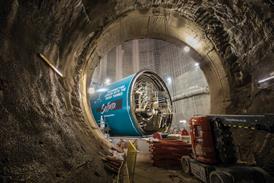Ted Lowery on a judgment that slated one sideвАЩs jaundiced approach to quantum evidence

The case
Imperial Chemical Industries Ltd vs Merit Merrell Technology Ltd [2018] EWHC 1577 (TCC)
Before the Honourable Mr Justice Fraser
In the Technology and Construction Court
Judgment delivered 21 June 2018
The facts
During 2012 MMT was engaged by ICI to provide steel and pipe works at a new paint manufacturing facility in Ashington, Northumberland. The contract was based on the NEC3 terms with an estimated value of £1.9m but MMT was subsequently instructed to carry out significant additional works. ICI stopped making payments to MMT during 2014, alleging extensive defective works. In February 2015 ICI purported to terminate the contract, claiming repudiatory conduct by MMT. Following a successful adjudication MMT received a further £8m, bringing the total paid to £20.9m. During 2015 ICI commenced proceedings in the TCC seeking the return of some £10m in respect of defective works and damages for wrongful repudiation.
Liability issues were heard first and in a judgment dated 12 July 2017 the court found ICI had repudiated the contract and that the value of the defective works was around ¬£187,000 rather than the ¬£5m claimed by ICI. The judgment included significant criticisms of ICIвАЩs factual and expert witnesses and its overall approach to the litigation, one consequence of which was that MMT was awarded 95% of its costs on an indemnity basis.
The quantum trial took place in April 2018.
By highlighting so scathingly what not to do, this judgment shows how judges want to see TCC litigation conducted
The issue
What was the overall value of the work carried out by MMT and the proper measure of the damages that MMT was entitled to recover for ICIвАЩs repudiatory breach?
The judgment
The judge reviewed in detail the background to the quantum dispute, disclosure issues and the quality of the evidence presented. The judge noted among other things that ICIвАЩs witnesses had tended to ignore several findings on fact made in the judgment on liability. He also noted that none of ICIвАЩs witnesses could speak directly to the history of the works, in particular the interim valuation agreements made between the project manager вАУ before he resigned вАУ and MMT. The judge reiterated the finding he had made in the liability trial: that from around 2015 ICIвАЩs principal objective had been to drive down the value of MMTвАЩs works by picking a (low) number and then working backwards from it. This was clearly not the correct approach under NEC3 or indeed under any other contract requiring a fair valuation.
The judge considered that ICIвАЩs late disclosure of a large volume of quantum documents and the introduction at the last minute of a supplemental expertвАЩs report was unsatisfactory and appeared to have been deliberate with the aim of disrupting MMTвАЩs preparation for trial.
The judge was highly critical of ICIвАЩs quantity surveying expert, whom he found to have adopted a partisan approach to the valuation which was provided for neither by the contract nor by the findings on fact made in the liability judgment. The judge also commented that the statements of MMTвАЩs witnesses appeared to overlap, giving the impression that they had been created from a common document. The duplicated sections were struck out but the judge found that this did not undermine the overall credibility of MMTвАЩs witness evidence.
In conclusion the judge found that MMT was properly entitled to some £22m on the works valuation, requiring a further payment of £268,000, and some £2m in damages for repudiatory breach.
Commentary
Most of the judgeвАЩs criticism was directed against ICIвАЩs witnesses, in particular the failure of ICIвАЩs quantity surveying expert to discharge his duty to the court to act independently and follow the principles set out in The Ikarian Reefer [1995] LloydвАЩs Rep 455 and CPR Part 35.
However, the judge also criticised the partiesвАЩ joint approach to the valuation dispute in so far as they had prepared a Scott Schedule (a table listing the discrete valuation issues) that was not ordered and invited the court to work out the figures unaided on the basis of the paperwork alone. The result was that a quantum trial, originally booked for four days, required eight days, which the judge said was contrary to the overriding objective of allocating the courtвАЩs resources on an appropriate basis. Where construction claims typically consist of several dozen mini-disputes over individual items, the courts may deal brusquely (including in relation to costs) with de minimis points that it is thought the parties, their experts and their lawyers should, acting reasonably, have been able to agree.
By highlighting so scathingly what not to do, this 113-page judgment shows how the judges want to see TCC litigation conducted including in relation to witness statements, expert evidence, disclosure and pre-trial conduct generally. This judgment is likely to be frequently cited by parties to litigation who consider that the opposition is not playing fair.
Postscript
Ted Lowery is a partner in Fenwick Elliott



























No comments yet